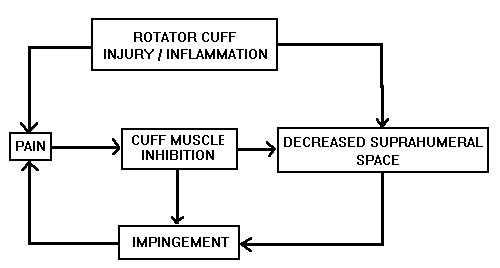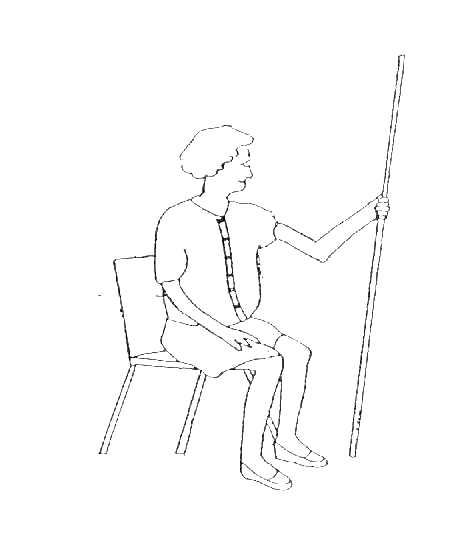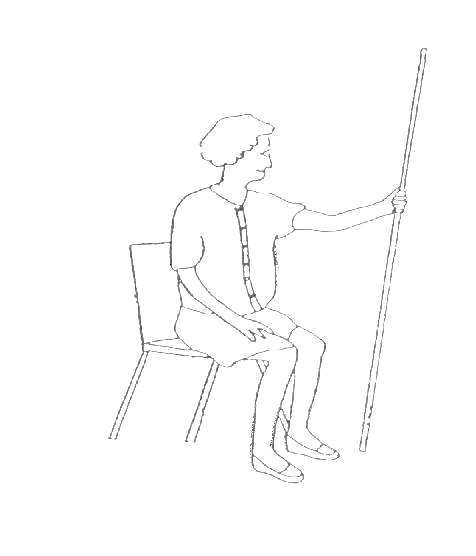In doing so, they strengthen and reinforce the normal synergy, and avoid substituting a synergy that ignores the rotator cuff muscles and leaves them vulnerable to reimpingment and reinjury.


Therapists commonly strengthen shoulder muscles, including rotator cuff muscles, in an isolated manner using individual exercises. However, we should not assume that exercises aimed at individual muscles will improve those muscles' contributions to the muscle synergies that a person must activate during actual reaching tasks. Therapists must respect the integrity of task-specific synergies. Winstein and her colleagues (1989) showed, for example, that weight-shifting skills do not necessarily transfer from one task to another.
The dowel exercises, for which patient instructions appear below, are designed to permit the patient to practice the reaching synergy under very low loads. Under a sufficiently low resistance, less than the weight of the arm in this case, a person can activate the normal muscle synergy, which combines the rotator cuff muscles with more superficial glenohumeral and scapulothoracic muscles, as they perform a task that closely resembles a typical reaching pattern.
In doing so, they strengthen and reinforce the normal synergy, and avoid substituting a synergy that ignores the rotator cuff muscles and leaves them vulnerable to reimpingment and reinjury.

|
|---|
Often, overusing these "substitute" muscles leads to neck pain. Worse, the injured but unused small muscles grow even weaker, and are reinjured when you use the arm's big and small muscles in the wrong order.
The only way to break this cycle is to restrengthen those small muscles so you can use them properly for reaching or lifting. The problem is that they are weak and easily reinjured if you work them too hard. The exercises here let you use a broomstick (or other pole) to support your arm's weight while you exercise. This takes the load off the small muscles so that you can strengthen them properly.
Sit or stand to do these exercises. If you sit, be sure to sit away from the back of your chair so that you can keep your back straight, but not stiff.Hold the pole at a comfortable height, no more than the level of your shoulder. Place the pole on the ground near your toe. Slowly push the pole away from you. DO NOT SHRUG YOUR SHOULDER. Do the exercise in front of a mirror or rest your opposite hand on your shoulder to make sure you're not shrugging it at the beginning of the exercise. Shoulder shrugging is an example of using a large "substitute" muscle. It is a habit these exercises will help you break. Let the pole come back to you slowly by relaxing the arm muscles. Don't pull the pole back to you. Do the exercise only until it becomes slightly difficult. Don't push yourself, because fatigue will lead you to use substitute muscles. When these exercises become very easy for you, you can make them harder by holding the pole with your hand slightly higher. You can also increase your shoulder motion by tipping the pole out to the side slowly, in addition to exercising by pushing the pole straight ahead. | 
|
|---|---|

|